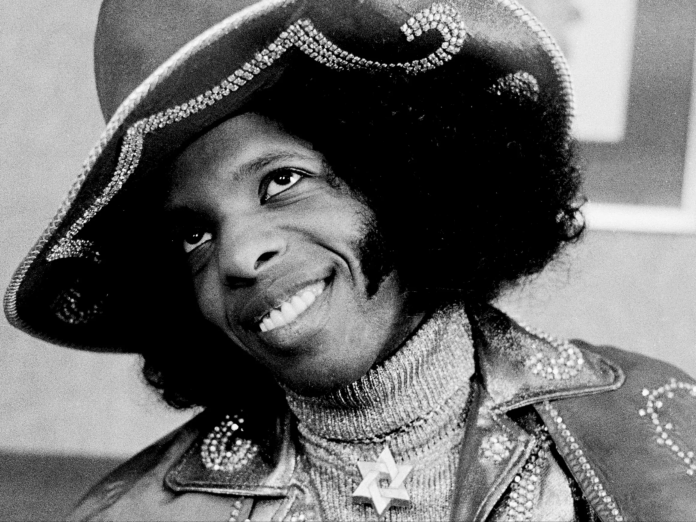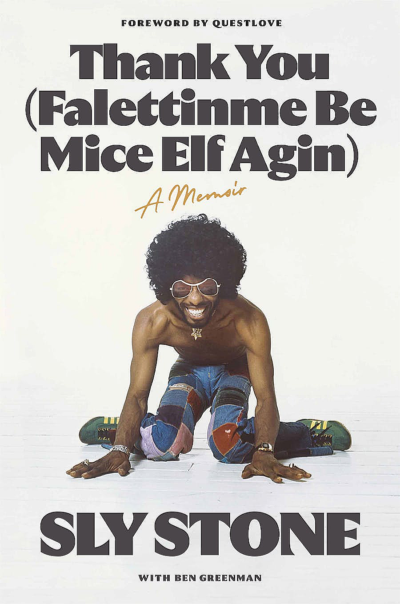At last, the answer to a now decades-old question: “What happened to Sly Stone?”
After reading Thank You (Falettinme Be Mice Elf Agin), A Memoir Sly Stone with Ben Greenman (AUWA press), I’d have to say the answer is, in a word, “drugs.” Sylvester Stewart (his given name at birth) was not just physically and mentally addicted to drugs. In mind-altering substances, Sly actually found something he loved in life seemingly as much as he loved music. That something was being high with only brief moments, measured in minutes, of sobriety.
Sly’s account of his life follows a trajectory parallel with the trajectory of his actual life — not a nightmarish spiral of drug abuse in his estimation, as much as a life of him just being himself, again, thank you. He is very forthcoming about his substance use, e.g., weed, various pills (by name), powder cocaine, rock cocaine (“called crack because of the crackling noise it made when it was heated up”), and PCP aka angel dust–an animal tranquilizer that also compromised another musical giant’s judgement, James Brown. I wonder who first thought, “I want to get high, so let me take something that would knock a gorilla out?” But, I digress…
Sly is forthcoming, but not completely analytical about the effect drugs may have had on his daily interactions. As a guest host on the then popular TV talk show, The Mike Douglas Show, Sly recounts Muhammad Ali’s intolerance/frustration toward him. Upon reviewing a much-watched 1974 YouTube video–what Sly doesn’t say is, he was clearly high. He does the same with his awkward first interview on The Dick Cavett Show (not the only one), again, he was high. You can attach that addendum to every time we’ve seen Sly Stone. With very rare exceptions, he was high!
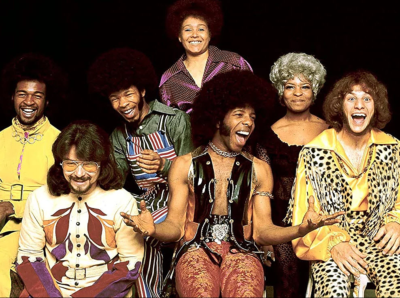
The performer’s origin story begins with his maternal grandparents; Sly’s mother meeting his father; the birth of older sister, Loretta; his entrance into the world, and the birth of his younger siblings, Rose, Freddie, and Vaetta, who became members of Sly and the Family Stone, after a childhood together in the family gospel group. Sly was the featured vocalist. The beginning of the book is lucid, and moves well, from the family’s uprooting from his birthplace of Denton, Texas (north of Dallas), to Vallejo, California (northeast of San Francisco), through his early love of instruments, i.e. drums, guitar, organ, etc., to his days at Vallejo Junior College, studying music theory with Dr. David Froehlich. “What did I learn from him? Everything. We did ear training, which taught us to recognize chords, scales, intervals, and rhythms. Then we went deeper…”
Sly recounts getting his certificate from the Chris Borden School of Modern Radio Technique, then becoming a popular DJ on KSOL, 1450 on your AM dial. He talks about meeting the various members of the Family Stone with vivid clarity. These were just marijuana days; he actually resisted trying cocaine… at first.
First forays into producing, writing, and recording, working with other artists, and then the formation of Sly and the Family Stone are discussed. Sly remembers how hard they worked, the many hours upon hours of rehearsal, the club gigs. He was completely focused. Music was his first love with no distractions at that point in life. We learn of the records before the hits, then the soundtrack of our lives– “Dance to The Music,” “Stand,” “I Want To Take You Higher,” “Everyday People,” “Sing A Simple Song,” and more.
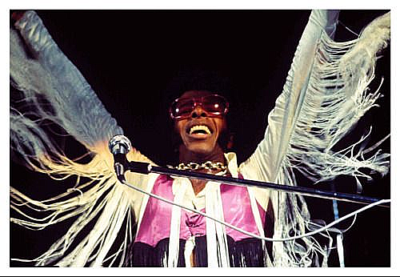
A turn of the page and we’re at the epic Woodstock performance in 1969. One interesting rumor is dispelled in the book. The word was that there was bitter animosity between Sly and Larry Graham, the other genius in the Family Stone. Graham was a naturally innovative multi-instrumentalist/singer, who played bass with Sly, and created a style known by Graham as “thumping and plucking”–you thump with your thumb, and pluck with your fingers. This technique has been widely adopted as one way to play the bass guitar with various other names attached to it, but Graham was “the one.” Sly refers to Graham many times in the book. He even referred to the success Graham reached with his own band, Graham Central Station, his speech at the Rock & Roll Hall of Fame induction ceremony, and the fact that he spoke at Family Stone’s trumpeter/horn arranger/vocalist (“all the squares go home”) Cynthia Robinson’s funeral.
Sly lays any bad blood at the feet of Bubba Banks, a hairdresser, friend, security person, assistant, expert liar, etc. Perhaps most importantly, Banks eventually became Sly’s brother-in-law when he married sister Rose. This is important because Rose and Graham had a “thing” before that. There were some incestuous “things” going on in the band, like Freddie used to be with Cynthia, but later Sly and Cynthia had a baby. Anyway, things got so hot between Bubba and Graham that they allegedly put hits out on each other. Exit Larry. Sly owns no part of that negativity, and even mentions that rapper/singer, Drake, is Graham’s nephew.
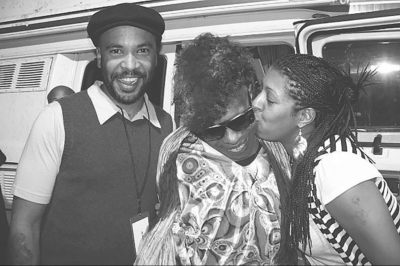
As Sly’s drug use expanded, his life story gets not exactly muddled, but bogged down. I felt a feeling of frustration as I read. There was a discernible pointlessness to his life post his heyday. Drug busts; jail time; delinquent child-support payments; more jail time. Through it all we wanted to see Sly, to hear him, but clear, lucid, focused Sly was gone. Unbeknownst to most of us, the Sly Stone we loved had already ceased to exist. This was a different cat. Through it all, people helped him, mostly financially — other folks tried to help him, like Michael Jackson offered help with the stipulation Sly had to get “straight.” Sly didn’t like that stipulation – he loved to stay high, so no deal.
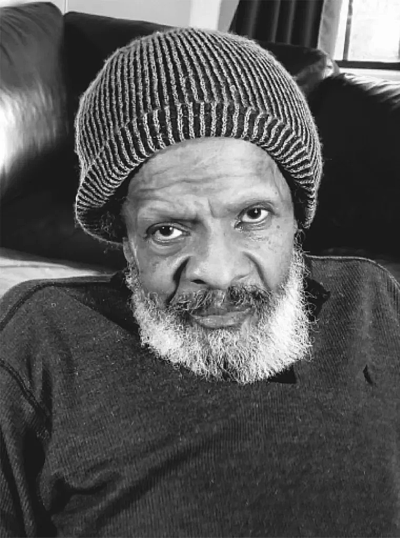
There are accounts of the fairly well-known friendships with George Clinton, and Bobby Womack, but there are also some encounters one would not expect, like less-than-flattering, albeit juicy or humorous, accounts of experiences with the likes of Diana Ross, and Jermaine Jackson.
Sylvester Stewart leaves us with a portrait of a current lifestyle not unlike, the lifestyle many of us lead. TV sports, YouTube videos, trying to like the music his younger family members tell him to check out. Now, at age 80, he struggles with ill health; but no recreational drugs.
He had to make the ultimate choice — keep getting high and perish, or continue to live.
Sly chooses life.
Thank you….
Monte Croft is a multi-instrumentalist, singer, composer, writer, who lives in New York City with his wife and son. He is an Associate Professor at Berklee College of Music in Boston.


